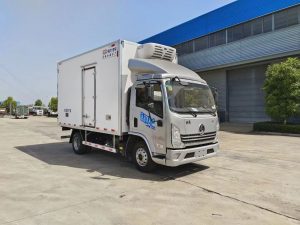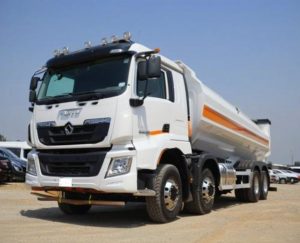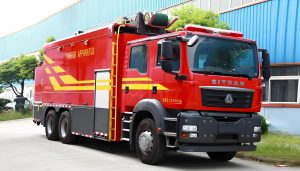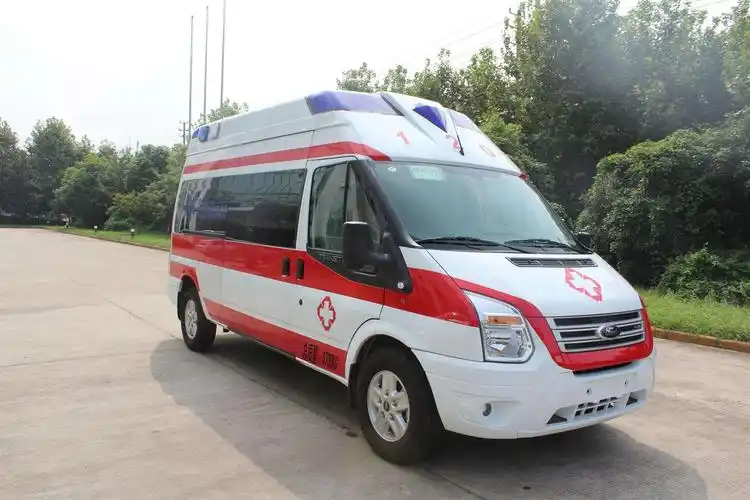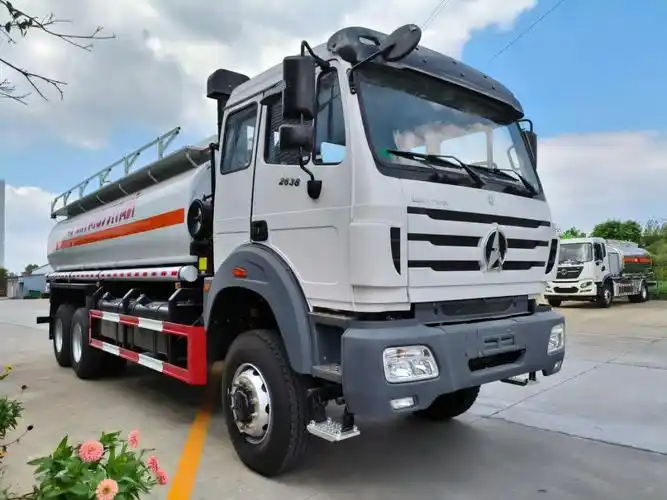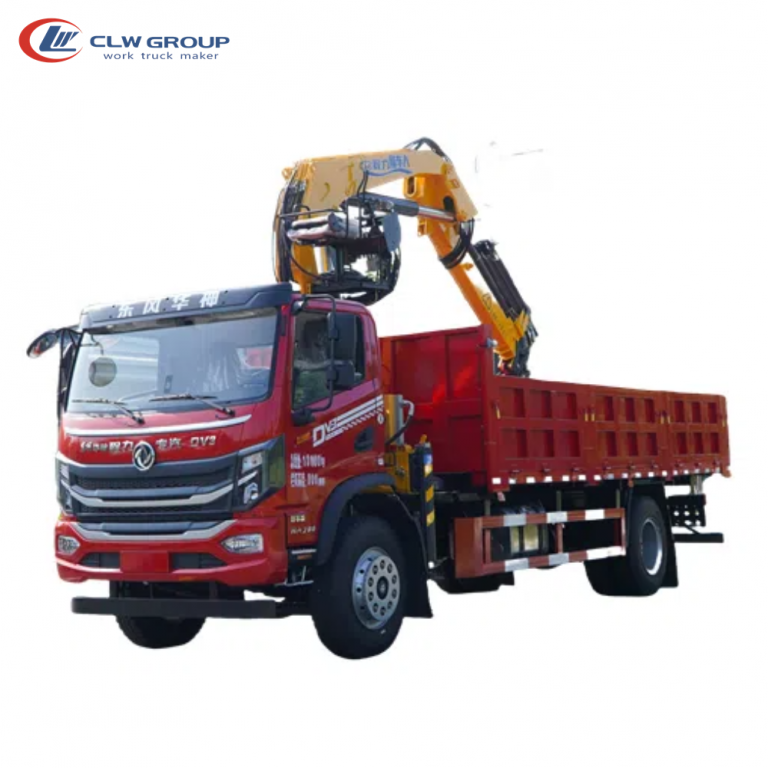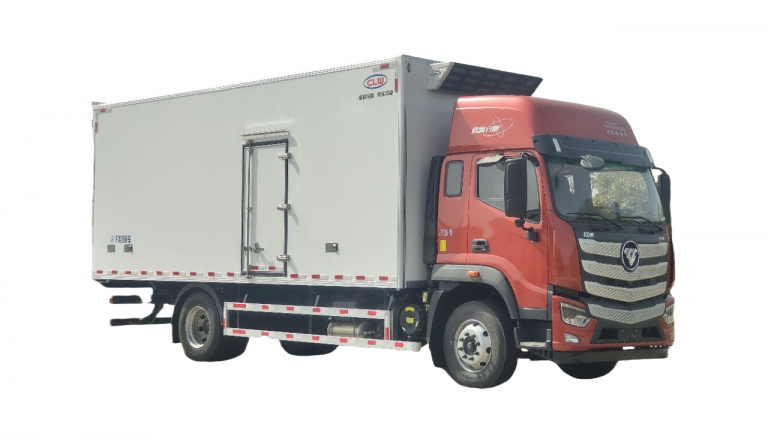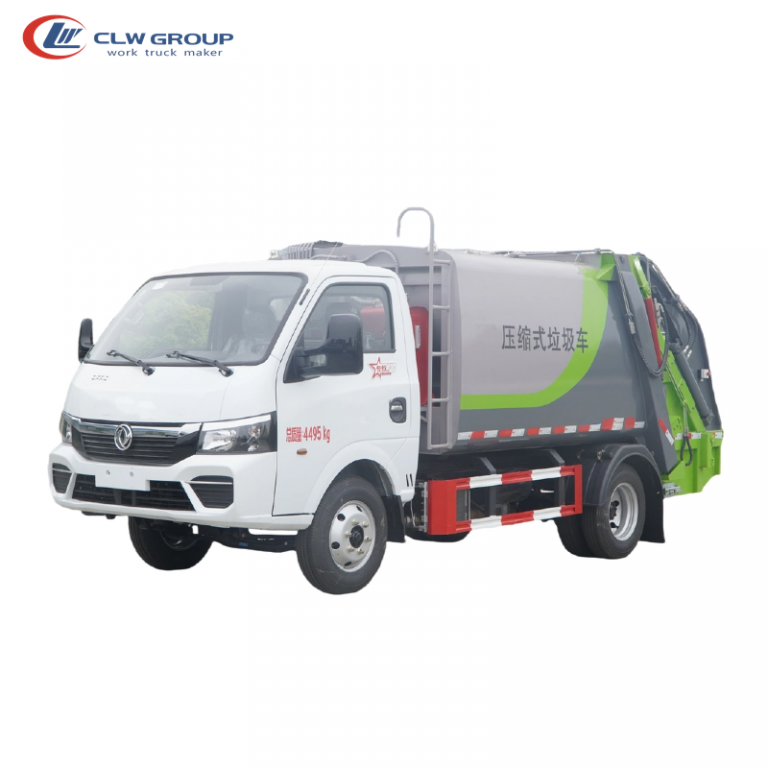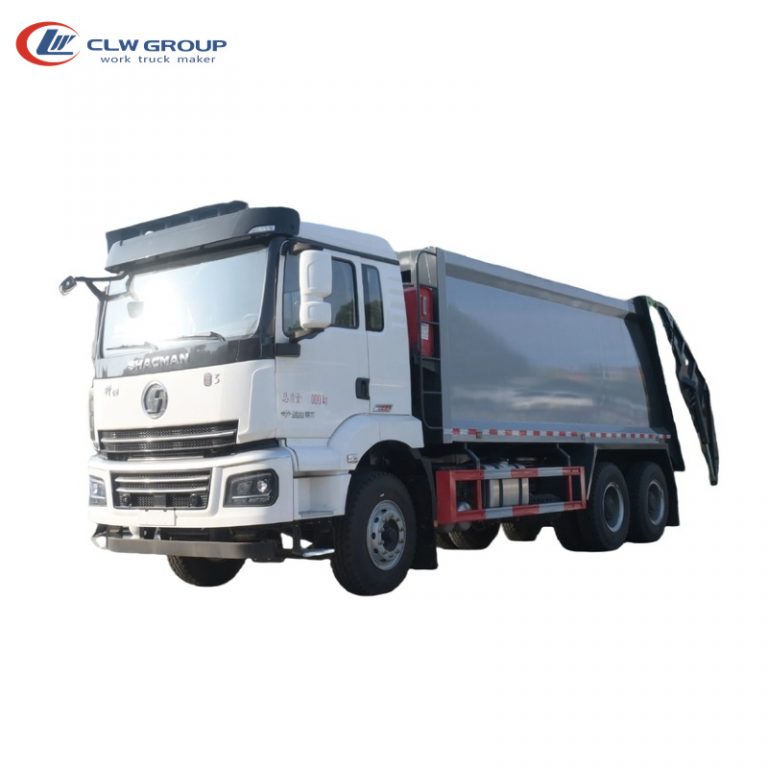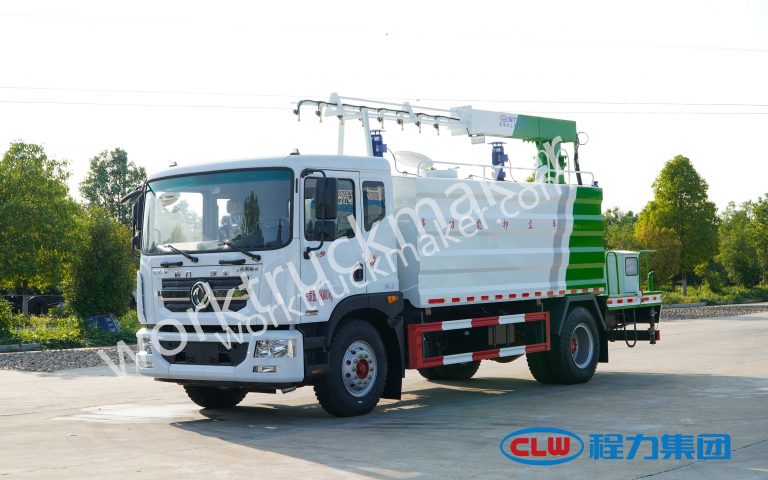Table of Contents
Toggle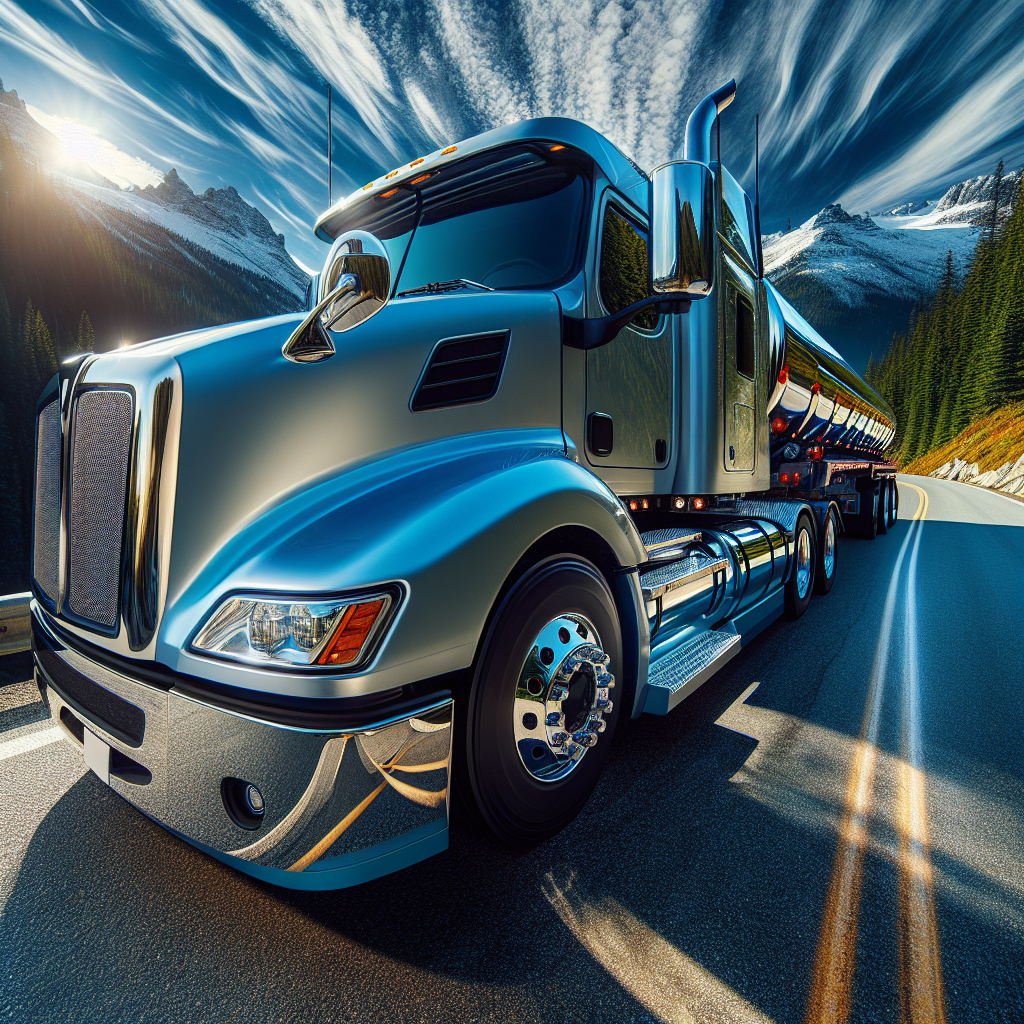
Tanker trucks play a crucial role in the transportation of liquids and gasses across vast distances. These specialized vehicles are designed to carry a wide range of substances, from harmless water to hazardous chemicals, making them an essential part of many industries. The importance of tanker trucks in our modern economy cannot be overstated, as they enable the efficient movement of vital resources and products.
This guide aims to provide a comprehensive overview of tanker trucks, covering their various types, capacities, and safety features. It will explore common designs and materials used in tanker construction, as well as the regulations that govern their operation. Additionally, the guide will discuss the diverse applications of tanker trucks in different sectors. By delving into these aspects, readers will gain a deeper understanding of these versatile vehicles and their significance in today’s transportation landscape.
Types of Tanker Trucks
Tanker trucks come in various forms, each designed to transport different materials, from liquids and gasses to dry bulk. These specialized vehicles are categorized into three main types based on their size and capacity: light duty, medium duty, and heavy duty tankers. Each type serves specific purposes and has distinct characteristics to meet various transportation needs.
Light Duty Tankers
Light duty tankers are the smallest among the three types. These vehicles have a volume capacity of up to 1,000 gallons and a gross weight carrying capacity of less than 12,000 pounds. They fall under Classes 1-3 in the commercial truck weight classification system. While many light duty trucks are not used for commercial purposes, they can still perform well in various job settings. These tankers are suitable for transporting smaller quantities of liquids or gasses over shorter distances.
Medium Duty Tankers
Medium duty tankers offer greater versatility and capacity compared to their light duty counterparts. These vehicles can hold between 500 gallons and 4,000 gallons, with a gross weight capacity of less than 26,000 pounds. They are classified as Class 4-6 trucks in the commercial truck weight system. Medium duty tankers are ideal for businesses that require commercial trucks for specific applications. This category includes a wide range of vehicle types, such as landscaping dump trucks and box trucks for delivery purposes. Their increased capacity makes them suitable for transporting larger quantities of liquids or gasses over longer distances.
Heavy Duty Tankers
Heavy duty tankers are the largest and most capable type of tanker trucks. These vehicles fall under Classes 7-8 in the commercial truck weight classification system, with a gross vehicle weight rating of more than 33,000 pounds. Heavy duty tankers have a volume capacity typically ranging from about 5,500 gallons to 9,000 gallons, allowing them to transport more than 26,000 pounds of material. To accommodate this substantial load capacity, heavy duty tanker trucks can be up to 53 feet long for single trailers and up to 100 feet for multi-trailer configurations.
Examples of heavy duty tanker trucks include 3-axle tractor-trailer tractors and single-unit dump trucks. It’s important to note that operating these vehicles usually requires at least a Class B commercial driver’s license (CDL), although specific regulations may vary by state.
Heavy duty tankers are further categorized based on the type of cargo they are designed to carry:
- Non or low-pressure bulk liquid cargo tanks (MC-306/DOT-406): These elliptical tankers typically transport gasoline or other flammable liquids. They have multiple compartments and are suitable for carrying a wide range of flammable or combustible liquids.
- Low-pressure bulk liquid cargo tanks (MC-307/DOT-407): These horseshoe-shaped tankers carry various liquids, including vegetable oils, syrups, milk, solvents, lubricants, and mild corrosives.
- Corrosives Cargo Tanks (MC-312/DOT-412): These tankers are specifically designed to transport strong corrosives, such as sulfuric or nitric acid.
- Compressed Gas Cargo Tanker (MC-331): These circular tanks are built to carry compressed gasses that are liquefied by the application of pressure.
- Cryogenic Cargo Tank (MC-338): These specialized tankers are designed to hold cryogenic liquids at temperatures of at least -130°F.
- Dry Bulk or Pneumatic Hopper Trailer: These trailers are used to transport dry bulk materials such as cement, plastic pellets, and grain.
Each type of tanker truck plays a crucial role in the transportation of various substances, ensuring the safe and efficient movement of materials across industries.
Tanker Truck Capacities
Tanker trucks come in various sizes and capacities to accommodate different transportation needs. The capacity of a tanker truck determines the volume of liquid or gas it can transport, which is crucial for efficient and cost-effective operations. Tanker truck capacities are typically measured in gallons and are closely related to the vehicle’s weight carrying capacity.
Small Volume Capacities
Small volume tanker trucks are designed for precision delivery of smaller quantities of liquids. These vehicles are ideal for local transportation and specific applications that require more frequent, smaller deliveries. Light duty tankers, which fall into this category, have a volume capacity of up to 1,000 gallons and a gross weight carrying capacity of less than 12,000 pounds.
Medium duty tankers offer slightly larger capacities, ranging from 500 to 4,000 gallons. These vehicles have a gross weight capacity of less than 26,000 pounds, making them suitable for a wider range of transportation needs while still maintaining maneuverability in urban areas.
Small-capacity tank trailers, including single-axle tank trucks and mini tankers, typically have a maximum capacity between 1,000 and 3,000 gallons. These vehicles are commonly used to transport liquid cargo within local communities. They are often seen at airports fueling aircraft or delivering domestic fuels such as liquefied petroleum gas to homes. Their design allows them to safely carry hazardous products while navigating through residential areas.
The versatility of small volume tankers makes them ideal for various applications, including:
- Delivering diesel fuel and gasoline to service stations
- Transporting chemicals to industrial sites
- Carrying water for fire suppression purposes
Large Volume Capacities
Large volume tanker trucks are engineered to transport massive amounts of liquids and gasses over long distances. These heavy-duty vehicles play a pivotal role in the transport industry, capable of moving substantial quantities of materials efficiently.
Heavy duty tankers, which fall into this category, typically have a volume capacity ranging from about 5,500 gallons to 9,000 gallons. These vehicles can transport more than 26,000 pounds of material, making them suitable for large-scale operations and long-haul transportation.
Some large trailer tankers with huge capacities can transport more than 11,000 gallons of liquid. These tankers are built to carry various liquids, including hazardous materials in bulk. Many liquid tankers feature a sophisticated multiple-compartment design that offers both safety and functionality. This design allows for the simultaneous transportation of various liquids, typically utilizing two, three, four, or five separate compartments.
The multi-compartment feature enables these tankers to transport a variety of liquids, including:
- Different grades of gasoline
- Diesel fuel
- Industrial chemicals
This versatility makes large volume tankers essential for efficient supply chain operations in industries such as oil and gas, chemical manufacturing, and fuel distribution.
The capacity of tanker trucks directly influences their applications and the industries they serve. From small volume tankers delivering fuel to local gas stations to large volume tankers transporting massive quantities of chemicals across long distances, these specialized vehicles play a crucial role in the movement of liquids and gasses in our modern economy.
Common Tanker Truck Designs
Tanker trucks come in various forms, each specifically designed to transport different materials, from liquids and gasses to dry bulk. These specialized vehicles play a crucial role in the transportation of hazardous and non-hazardous substances across industries. The design of a tanker truck is determined by the nature of the cargo it carries, ensuring safety, efficiency, and compliance with regulations.
Insulated Tankers
Insulated tankers are engineered to maintain the temperature of their contents during transport. These vehicles are essential for carrying products that need to be kept either heated or cooled. The insulation helps to preserve the quality and integrity of temperature-sensitive materials throughout the journey.
Typically, insulated tankers have a distinctive horseshoe shape when viewed from behind. This design consists of an outer jacket, usually made of aluminum or steel, and an inner tank that may be lined with materials such as fiberglass. The space between the outer and inner layers is filled with insulating material to regulate temperature.
These tankers are commonly used to transport:
- Mild acids
- Water
- Milk
- Combustible liquids
The insulation not only helps to maintain temperature but also provides an additional layer of protection for the cargo.
Non-Insulated Tankers
Non-insulated tankers are designed for transporting substances that do not require temperature control. These tankers are typically simpler in construction compared to their insulated counterparts and are used for a wide range of liquid cargoes.
One common type of non-insulated tanker is the MC-306 (DOT-406) truck. These vehicles have the following characteristics:
- Elliptical shape
- Flat or nearly flat ends
- Primarily constructed from aluminum
- Usually multi-compartmented with separate manholes for each compartment
- Equipped with rollover protection to prevent manholes from opening during accidents
Non-insulated tankers are versatile and can transport various materials, including:
- Gasoline and diesel fuel
- Liquid fuel products
- Alcohol
- Flammable or combustible liquids
- Non-flammable liquids (e.g., milk or molasses)
These tankers may also carry mild corrosives but are not suitable for strong corrosives or pressurized gasses.
Pressurized Tankers
Pressurized tankers are specifically designed to carry liquids or gasses under pressure. These specialized vehicles ensure that the contents remain in their desired state during transport, making them crucial for industries reliant on safe and efficient liquid or gas transportation.
There are several types of pressurized tankers, each serving specific purposes:
- Compressed Gas Cargo Tankers (MC-331):
- Built to withstand pressures of 100 to 500 psi
- Constructed from carbon steel
- Typically painted white to prevent UV damage
- Used for transporting propane, LPG, and anhydrous ammonia
- Cryogenic Cargo Tank Trucks (MC-338):
- Designed for transporting cryogenic liquids like nitrogen, oxygen, argon, and hydrogen
- Volume capacity of 4,500 to 5,550 gallons
- Made from aluminum or mild steel to preserve low temperatures
- Equipped with relief valves to manage internal pressure
- High-pressure tube tankers and trailer trucks:
- Designed for efficient transport of industrial gasses under high pressure
- Equipped with 4-36 high-pressure tanks
- Range from 20 to 53 feet long
- Act as a “rolling pipeline” for continuous gas supply
These pressurized tankers are equipped with advanced safety mechanisms to ensure the secure and efficient transport of their contents. They play a vital role in industries that rely on a steady flow of gasses or pressurized liquids for their operations.
Materials Used in Tanker Construction
The selection of materials for tanker truck construction plays a crucial role in ensuring the safety, efficiency, and longevity of these specialized vehicles. The choice of material depends on various factors, including the type of cargo to be transported, weight considerations, and corrosion resistance. Three primary materials are commonly used in tanker construction: aluminum, carbon steel, and stainless steel. Each material has its unique properties and advantages, making it suitable for specific applications.
Aluminum Tankers
Aluminum has become increasingly popular in tanker truck manufacturing due to its lightweight properties. This material offers significant weight savings compared to steel, which contributes to increased fuel efficiency and payload capacity without compromising structural strength. Aluminum tankers are particularly favored for their corrosion resistance and durability.
Key advantages of aluminum tankers include:
- Lightweight construction, allowing for higher payload capacity
- Excellent corrosion resistance, reducing maintenance requirements
- High recyclability, making it an environmentally friendly option
- Non-combustible properties, enhancing safety during transportation
- Lower static electricity accumulation compared to other materials
Aluminum tankers are often chosen for transporting fuel, especially in configurations exceeding 10 tons. For instance, 12×4 tankers typically utilize aluminum alloy material, which can reduce the weight by approximately 2.5 tons compared to carbon steel tanks. However, this weight reduction comes at a cost, as aluminum tankers can be 60,000 to 70,000 more expensive than their carbon steel counterparts.
Carbon Steel Tankers
Carbon steel remains a cornerstone material in custom tanker truck manufacturing due to its exceptional strength and durability. High-grade steel alloys are used to construct the frame, chassis, and tank structure, providing robustness and structural integrity. Carbon steel contains 0.03-2% carbon, making it harder, tougher, and more elastic than pure iron.
Advantages of carbon steel tankers include:
- High strength-to-weight ratio
- Cost-effectiveness compared to other materials
- Versatility in manufacturing processes (casting and forging)
- Ability to withstand high temperatures without losing strength
Carbon steel tankers are often preferred for smaller capacity vehicles, typically those under 10 tons. These tankers are commonly used for flow refueling operations that do not require highway travel, where weight considerations are less critical.
Stainless Steel Tankers
Stainless steel finds extensive application in custom tanker trucks involved in transporting food-grade or sanitary liquids. Its non-reactive properties prevent contamination and maintain the purity of transported substances, making it suitable for food, pharmaceuticals, and potable water. Tanker manufacturers utilize specialized grades of stainless steel that meet stringent regulatory standards for hygiene and safety.
Key benefits of stainless steel tankers include:
- Exceptional corrosion resistance, particularly in maritime environments
- High durability and longevity
- Ease of cleaning and maintenance
- Resistance to high temperatures and fire
Stainless steel tankers are typically available in two grades: 201 and 304. The 304 grade offers superior corrosion resistance and high-temperature tolerance, making it more expensive but often worth the investment for specialized applications.
In conclusion, the choice of material for tanker construction depends on various factors, including the specific requirements of the cargo, weight considerations, and environmental conditions. While aluminum offers lightweight advantages, carbon steel provides strength and cost-effectiveness, and stainless steel excels in sanitary and corrosion-resistant applications. Manufacturers must carefully consider these factors to select the most appropriate material for each tanker truck design.
Safety Features of Tanker Trucks
Tanker trucks are designed with numerous safety features to ensure the secure transportation of liquid cargo. These features address the unique challenges posed by transporting large volumes of liquids, which can shift and create instability during transit. The safety measures implemented in tanker trucks aim to prevent accidents, minimize the risk of spills, and protect both the driver and the environment.
Baffles and Compartments
One of the primary safety features in tanker trucks is the use of baffles and compartments. These internal structures play a crucial role in controlling the movement of liquid cargo and preventing sloshing. Baffles are internal walls or partitions that divide the tank into smaller sections. This design helps to reduce the force of the liquid moving back and forth as the truck accelerates, brakes, or turns.
The importance of baffles becomes evident when considering the behavior of liquids during transportation. Without baffles, the liquid would surge forward when braking, pushing against the front wall of the tank. This sudden shift in weight can dramatically increase the risk of jackknifing or rollover. Baffles effectively spread the energy evenly throughout the entire truck, making it easier and safer to handle.
Compartments, on the other hand, are separate tank sections that can be filled and emptied independently. This feature allows for more precise control of the load and can help prevent spills if one compartment is damaged. The use of compartments also enables the transportation of different types of liquids in a single tanker, provided they are compatible.
Pressure Relief Valves
Pressure relief valves are another critical safety feature in tanker trucks. These valves are designed to prevent the tank from rupturing due to excessive internal pressure. They automatically open if the pressure inside the tank becomes too high, allowing some of the contents to be released and relieving the pressure. This mechanism is crucial in preventing catastrophic failures that could result in large-scale spills or explosions.
In addition to standard pressure relief valves, some tankers are equipped with specialized fire engulfment vents. These vents are designed to release pressure rapidly in the event of a fire, allowing for a uniform burn rather than a catastrophic explosion. The fire engulfment vent releases pressure in a fraction of a second and then reseals, allowing the fire to burn while preventing an explosion.
Emergency Shut-Off Systems
Many tanker trucks are equipped with emergency shut-off systems that can quickly stop the flow of liquid in the event of an accident or other emergency. These systems may include remote-controlled valves, automatic shut-off devices triggered by rollovers or impacts, and other features designed to minimize the risk of spills or leaks.
The prompt activation of emergency shut-off systems can help contain damage and prevent further environmental contamination. These systems are particularly important when transporting hazardous materials, as they can significantly reduce the impact of accidents or equipment failures.
In addition to these primary safety features, tanker trucks incorporate other design elements to enhance safety. For example, manlids on the top of the tanker are fitted with roll-over devices that seal the aperture in the event of a rollover. This feature is crucial because the expansion and contraction of fuel require each compartment to “breathe,” which could create a leak path if the tanker were to roll over.
Furthermore, tanker trucks are engineered with a low center of gravity to improve stability. This design, combined with internal bulkheads for strength and compartment separation, helps to mitigate the effects of liquid movement during transportation.
Regulations Governing Tanker Trucks
The transportation of hazardous materials by tanker trucks is subject to stringent regulations enforced by multiple federal, state, and local agencies. These regulations aim to protect people and the environment from the risks associated with transporting hazardous materials. The regulatory framework is complex and multifaceted, encompassing various aspects of tanker truck operations.
DOT Regulations
The Department of Transportation (DOT) plays a crucial role in regulating the shipment of hazardous materials, including those transported by tanker trucks. The Hazardous Materials Transportation Act of 1975 (HMTA) empowered the Secretary of Transportation to designate materials as hazardous if they pose an unreasonable risk to health, safety, or property. This act was later clarified by the Hazardous Materials Transportation Uniform Safety Act (HMTUSA) of 1990, which aimed to address the maze of conflicting state, local, and federal regulations.
DOT regulations are codified in the Code of Federal Regulations (CFR) and cover various aspects of hazardous materials transportation:
- 49 CFR 172: Outlines requirements for hazardous materials communication, emergency response information, and training.
- 49 CFR 173: Provides general requirements for shipments and packaging.
- 49 CFR 177: Addresses carriage by public highway, including emergency situations.
- 49 CFR 397: Specifies driving and parking rules for hazardous materials transportation.
These regulations ensure that tanker trucks are properly designed, constructed, and maintained to minimize the risk of accidents and environmental contamination. They also cover aspects such as proper marking and labeling of hazardous materials, as well as requirements for emergency response procedures.
EPA Regulations
The Environmental Protection Agency (EPA) also has a role in regulating tanker trucks, particularly in terms of environmental protection. While the provided factual keypoints do not specifically mention EPA regulations, it’s important to note that the EPA works in conjunction with other agencies to ensure that the transportation of hazardous materials does not pose undue risks to the environment.
EPA regulations may focus on aspects such as:
- Spill prevention and containment measures
- Emissions control for tanker trucks
- Proper disposal of hazardous materials
OSHA Requirements
The Occupational Safety and Health Administration (OSHA) is responsible for ensuring the safety of workers involved in the loading, unloading, and transportation of hazardous materials. While specific OSHA requirements are not detailed in the provided keypoints, it’s understood that OSHA works in tandem with other regulatory bodies to establish safety standards for tanker truck operations.
OSHA requirements typically address:
- Worker safety during loading and unloading operations
- Personal protective equipment for employees handling hazardous materials
- Training requirements for workers involved in tanker truck operations
It’s worth noting that the Pipeline and Hazardous Materials Safety Administration (PHMSA) also plays a significant role in regulating tanker trucks. PHMSA recommends best practices for cargo tank motor vehicle (CTMV) loading and unloading operations, emphasizing the importance of focused training and operating procedures to reduce incidents caused by human error.
Key recommendations from PHMSA include:
- Performing risk assessments of loading and unloading operations
- Developing and adhering to specific operating procedures
- Implementing monitoring procedures for transfer operations
- Ensuring proper maintenance and testing of transfer equipment
- Providing adequate training for personnel involved in loading and unloading operations
These regulations and recommendations collectively form a comprehensive framework aimed at ensuring the safe and efficient transportation of hazardous materials by tanker trucks. Compliance with these regulations is essential for protecting public safety, worker health, and the environment.
Common Uses for Tanker Trucks
Tanker trucks play a crucial role in the transport industry, efficiently moving various liquids and gasses across long and short distances. These specialized vehicles are designed to handle a wide range of substances, from hazardous materials to consumable products. The versatility of tanker trucks makes them essential in several key industries, each with its unique requirements and regulations.
Fuel Transport
One of the most common uses for tanker trucks is the transportation of fuel. These vehicles are in high demand due to the essential nature of their cargo. Fuel tanker trucks are responsible for delivering gasoline, diesel, and other petroleum products to gas stations, airports, and various other locations across the country.
Fuel tankers often have multiple compartments, allowing them to carry different types of fuel simultaneously. This design enables efficient distribution of various fuel grades in a single trip. These trucks are equipped with vapor recovery systems to prevent emissions during transport and transfer operations, ensuring environmental safety.
The drivers of fuel tankers require specialized skills and endorsements. In addition to the tanker endorsement, they typically need a hazardous materials (hazmat) endorsement. The combination of these two is known as an ‘X’ endorsement, reflecting the additional responsibilities and safety considerations associated with transporting fuel.
Chemical Transport
Chemical tanker trucks are designed to haul a wide variety of chemical products, many of which are classified as hazardous materials. These tankers are built to withstand the corrosive nature of their cargo and are often made from materials such as stainless steel or lined with protective coatings.
Some common chemicals transported by these tankers include:
- Ammonia
- Chlorine
- Hydrogen fluoride
- Sulfuric acid
- Nitric acid
Chemical tankers are equipped with safety features such as pressure relief valves to ensure the secure transport of potentially dangerous substances. Drivers of these vehicles must possess both tanker and hazardous materials endorsements, reflecting the high level of skill and safety awareness required for these jobs.
There are specialized tankers designed for specific types of chemicals:
- Corrosive Cargo Tanks (MC-312/DOT-412): These are used for transporting highly corrosive substances.
- Compressed Gas Cargo Tankers (MC-331): These specialize in transporting compressed gasses like propane, LPG, and anhydrous ammonia.
- Cryogenic Cargo Tank Trucks (MC-338): These are designed to transport cryogenic liquids such as nitrogen, oxygen, argon, and hydrogen.
Food Grade Transport
Tanker trucks also play a vital role in the food and beverage industry, transporting liquid and dry bulk food products. These food-grade tankers move various consumables between production sources and processing plants where they are packaged for consumption.
Food-grade tankers are typically made from food-grade stainless steel and are designed for easy cleaning to meet strict hygiene standards. They are often insulated to maintain the required temperature of the cargo during transport.
Common food-grade products transported by tanker trucks include:
- Milk (the most common type of freight for food-grade tankers)
- Fruit juices
- Vegetable oils
- Alcohol
- Corn syrup
- Vinegar
In addition to liquids, these tankers can also haul dry bulk food products such as sugar, flour, or starch. The tanks often have multiple compartments, allowing for the simultaneous transport of different types of liquids or dry goods.
While food-grade tankers are not subject to the same regulations as hazmat tankers, they are still more regulated than typical dry van freight. Strict temperature control and other requirements from various regulatory organizations must be followed to ensure the safety and quality of the transported food products.
Conclusion
Tanker trucks have a significant impact on various industries, playing a crucial role in the transportation of liquids and gasses. From fuel and chemicals to food-grade products, these specialized vehicles enable the efficient movement of essential materials across long distances. The diverse range of tanker types, each designed to handle specific substances, showcases the versatility and importance of these vehicles in our modern economy.
The safety features and regulatory framework surrounding tanker trucks highlight the commitment to protect both people and the environment. Baffles, pressure relief valves, and emergency shut-off systems work together to enhance safety during transport. Meanwhile, strict regulations from agencies like the DOT, EPA, and OSHA ensure that tanker truck operations adhere to high standards of safety and environmental protection. This comprehensive approach to safety and regulation underscores the critical nature of tanker trucks in maintaining the smooth flow of vital resources in our interconnected world.

